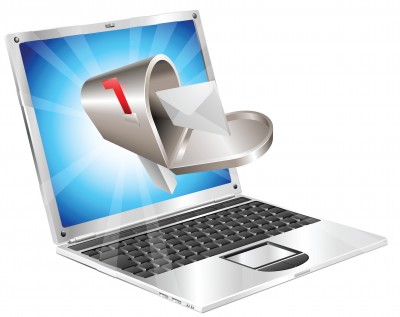By Mark Saghy
Email is, has, and continues to be, one of the best ways to retain customers. It reminds them you’re still around. It reminds them they need to purchase something from you that they may otherwise forget about. It is often the single greatest way to highlight a new product, promote a new brand, or inform about an upcoming sale or event.
A person’s inbox is, for many, a sacred space; for most of us, we check it daily, hourly, or even more frequently than that. The advent of smartphones makes it impossibly easy to stay connected to our flow of email coming through.
Despite the benefits, sending your customers an email can be a very sharp double-edged sword. With the increased ease of email use and access can often come a heightened sense of intolerance about the amount of business or advertising that flows through it.
Even with your most dedicated and loyal customers, there is a fine line between informing them and annoying them. One extra email, one unhelpful or confusing title, one tiny mistake noticed at an otherwise bad time, and bam–that customer has deleted the email without even opening it, or worse–they have permanently unsubscribed from your mailing list.
Here are some ways to keep that to a minimum, while encouraging customers to open as much of your email as possible.
Remember the Value of Quality over Quantity
Clearly, one of the best ways to lose customers is to inundate them with email. Again, a customer’s inbox is their personal space; they don’t want it being tied up with marketing campaign after marketing campaign. Unless the customer has specifically requested to receive a particular quantity of email from your company, it’s pretty safe to assume that you should pick and choose your battles very carefully when sending out a message. Consider the following:
- Think about why you are emailing-is it a friendly “hello”, or do you have very important news you feel your customers would like to know?
- When was the last time you sent an email out, and why? Is your message informing them of something new or exciting, or has business slowed down a bit, prompting you to send out a communication?
- The last time you sent an email, did you check the number of mailing subscribers afterwards, to see if you lost any? If you did, how many did you lose, and what percentage of the total was that?
Each of these questions should be analyzed, a clear answer formulated, and those answers compared with one another. This should typically be done before every email you send out. Remember, you want to focus on the quality of emails being sent, while also keeping a close eye on the quantity emailed over a period of time. Even the best-crafted emails will start being ignored if you send too many of them.
Personalize
No matter how far we have advanced technologically, some of the basic tenets of sales and customer service still apply to the business world today. Even though email cannot create the same kind of in-person relationship that a brick-and-mortar store can have, you can still try to recreate a perceived sense of a personal relationship with your customer. Done right, this can still be one of your most important retention tools.
One great way to help personalize emails is simply to use names. “Dear Customer” is one way to ensure the customer knows you don’t care enough to address them by name-even if their name is sitting right there in your mailing list database. Why not use “Dear Shirley” instead? It’s a simple fix and, presuming there is indeed a database of names, it can be computer automated.
Furthermore, consider having a name in the “from” portion of the email, too. Rather than yourcompany@yourcompany.com, consider using “Paul D. in Sales” or “Maggie, yourcompany.com’s VP”. In addition to encouraging the customer to open the email, doing this makes it sound more personal, more relatable, and less like a standard form letter-even if you send this same exact email to hundreds of your customers.
Keep It Simple, Keep It Clear
People are busier than ever before, and as such, people are more connected to their inboxes than ever before. Mostly gone are the days of walking out of the office and leaving that world behind until the next morning; for many of us, we are expected or required to maintain email communication with our jobs, no matter where we are-including a the dinner table, while traveling, or while watching our kid’s baseball game. Therefore, it is arguably more important than ever to keep the emails you send your customers as simple, clear, and effective as humanly possible.
You will need to use a little bit of psychology here: instead of thinking about the message from your company’s perspective, consider it from the customer’s point of view. Answer the one very important question your customer is often thinking when staring at your email: “why should I open this?” Whatever you want the answer to be, make that the primary focus of the message.
- Want to pitch a new product? Make the title pop, give as little background information as is needed in the intro, then pitch that product immediately.
- Upcoming sale? Make sure the customer knows it within the first few seconds of reading.
- Just checking in to say hi and keep in touch? Do it quickly; skip the fluff.
Keep your email as short as you can, and get your point across in as few words as possible. After you have composed your email, a great way to edit it for clarity is to go back and remove anything that isn’t absolutely relevant or necessary. When possible, bring in a second set of eyes to help with editing and whittling down the language.
Want to share some of your best email tips? Do you have a favorite subject line?
Image credit: http://us.stocklib.com
